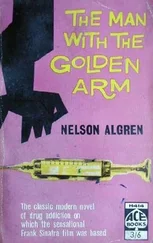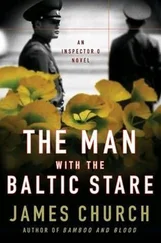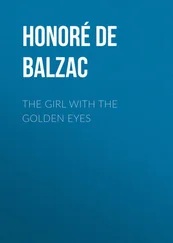“I’m afraid the main issue right now is the necessity of the project, not the technical challenge. It’s about what kind of island you want,” Detlef had replied.
Detlef and Sara stopped at Chung-teh to see the famous Clearwater Cliffs. The sea was battering the base of the soaring bluffs with various kinds of debris. Hordes of tourists were issuing continual exclamations of amazement as they admired the magnificent view from inside their cars. Sara was more than a little shaken by the scene. The cliff itself was glorious, but she couldn’t get over how these tourists turned a blind eye to the sorry state the coast was in, regarding it as a mere spectacle. She turned on her paper-thin tablet and looked up this stretch of coastline on Wikipedia.
She had been on the island for two days, and only had brief impressions of the place, but she’d already noticed that the islanders were inured to breathing this air and were now trying to get used to the sight of this sea. The pristine Pacific Ocean as she had seen it in so many images had now vanished. Sara was reminded of a documentary series called The World’s Oceans her father had played for her when she was in elementary school.
“Look, this is our Pacific. Isn’t it sublime?” At the time Sara thought that the only sea of the Norwegian people was the Norwegian Sea, given by the grace of God. Her geography teacher had told them that due to the balmy North Atlantic Current, the Norwegian Sea was the only ocean in the Arctic that was navigable year round. “Our Norwegian Sea,” he said. Sara still remembered the look in his eyes. But for her father, every sea was “ our sea:” “ our Indian Ocean,” “ our Atlantic,” “ our Pacific.”
Sara’s father had the same name as the first explorer to reach the South Pole. Many assumed he had changed his name because he loved adventure, but when he introduced himself he always stressed that it was the other way around, that he came to love the wandering life on account of his name. Between 1903 and 1906 the great Roald Amundsen had become the first explorer to sail through the Northwest Passage. He located the magnetic north pole along the way. But never in his wildest dreams could Amundsen have imagined that, after 2010, as a result of global warming, the land of ice and snow would gradually shrink and the Northwest Passage would be navigable year round, with no need to worry about which month was the melting season. It would have been like discovering Amazonia only to watch the rainforest shrink. Sara’s father often felt that it was for the best that Amundsen the explorer was already dead, that he did not have to witness all this.
Sara’s father had been an architect, but out of love for the sea he had abandoned his first career in the prime of life to become a fisherman. Because he was too often away, her mother had finally hardened her heart and left Sara at a friend’s house in the harbor. Sara could not remember much about her, just like it’s sometimes hard to remember when you made up your mind to do something. After the divorce, Amundsen kept taking his boat out into the fishing grounds every year to chase the shoals of smew, gadus, blue cod and herring, sometimes even all the way to the western edge of the North Atlantic. He’d heard that fishermen in search of cod had discovered the New World earlier than Columbus, but had kept it a secret in order to guard their fishing ground.
Most of Amundsen’s companions did not see how sad he was after his wife’s sudden departure, only noticed that he started bringing Sara on board with him more often. Little Sara’s childhood was spent at sea. Maybe this was one of the main reasons why she would go on to have the talent and the confidence to become a marine ecologist many years later.
Amundsen insisted on hunting one whale a year, but only one. He usually only selected such titanic adversaries as fin whales or sperm whales to uphold his modest pride and dignity as a Norwegian fisherman. Fin whales are rorquals, and most people would assume that rørhval , the Norwegian word for rorqual, meant “groove whale,” rør meaning “groove” and hval meaning “whale.” This made sense, because the rorquals have throat grooves. But Amundsen often told people he thought this was wrong. He read rør as cognate with rød , meaning “red,” because when a rorqual’s throat grooves expand they fill with blood and appear red. For him, the true meaning of rørhval was a great red-bellied whale in the deep blue sea. And Amundsen found the idea of hunting such a whale irresistible.
The international community had put quite a lot of pressure on Norway’s whalers, but Amundsen remained his old self. He would often tell people, “I hunt with a traditional harpoon, not with a whale gun or a bomb lance. It’s like a struggle for survival. What’s wrong with that? Not to mention that I only hunt one a year!” Amundsen practiced the art invented more than a thousand years ago by the Basques and improved by the Norwegians. When the lookout up in the crow’s nest spotted a whale, the harpooners would row out in smaller boats, surround it and launch their harpoons into its back. A rope on each harpoon was attached to a big hollowed-out gourd, which increased drag and caused the fleeing whale to exhaust itself more quickly. When the whale started spouting blood, the harpooners would aim at its weak spot and end the life of a great spirit.
Some environmental protection organizations believed that the use of the harpoon was even crueler than modern weapons as it would cause the whale greater pain. Amundsen found this impossible to accept. “All life must feel pain in the face of death. To live without pain is to live without dignity. We venerate the whales and don’t intend to kill them off, and I don’t make them suffer on purpose. We put our lives on the line, in exchange for theirs. When I hunt a whale, it’s either him or me. I don’t condone the commercial hunt, any more than you. It’s the commercial hunters who are driving the whales to extinction. You should be going after them , not us. Get it?”
Amundsen was a one-man army, with a truculent manner to match. Modern boats were so much faster than traditional ones, but Amundsen made a point of following the old ways. “At least, the whales that die by my hand die with dignity. They have a fighting chance, the chance to take my life.” Sometimes, before Little Sara was old enough to understand, he would explain, “People are a link in the food chain, and hunting in moderation won’t cause any species to disappear. Hunting whales made the old Scandinavian fishermen strong. This you must understand, my little Sara.”
To his friends, Amundsen was a typical Norwegian, tough and cold. Only Little Sara saw the weakness in him. He would often sit up at night in the cabin of his boat and pierce and yank at his skin with a fishhook. This process left twisting scars, which soon snaked all over his arms. People were always shocked by the sight when he rolled up his sleeves and set to work out at sea. One morning while they were eating breakfast, Little Sara surprised him by asking why he poked himself like that. He fell silent a minute, then replied, “To feel what the fish feel, my Little Sara.”
Many years later, Amundsen would say that his whaling career ended the year he turned fifty. That year he and his friends were chasing a pair of fin whales. They fought them all the way across the north Atlantic until they ended up killing the eighteen-meter-long bull and releasing the even more massive cow, because they had agreed never to kill females. But when the cow was leaving it took a swipe at the boat with her tail, not only ripping a hole in the hull but also destroying the propulsion system. Regretfully, they had to leave the male, letting its colossal body sink into the sea. Adrift, Amundsen and his friends sent out distress signals as they tried to fix the leak. They had even jumped into the whaleboat, ready to abandon ship, when a Canadian fishing vessel rescued them, lowering a transport net and hauling them off to Newfoundland.
Читать дальше












